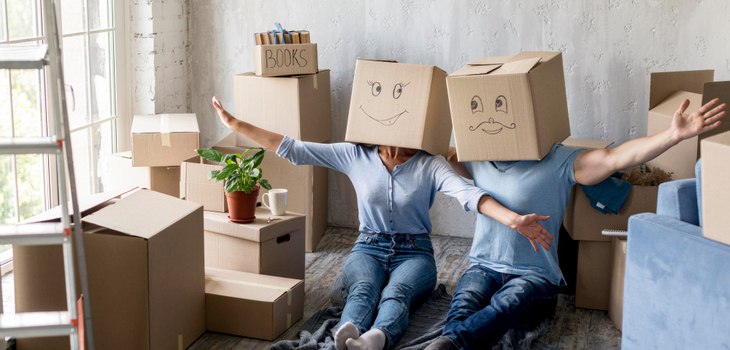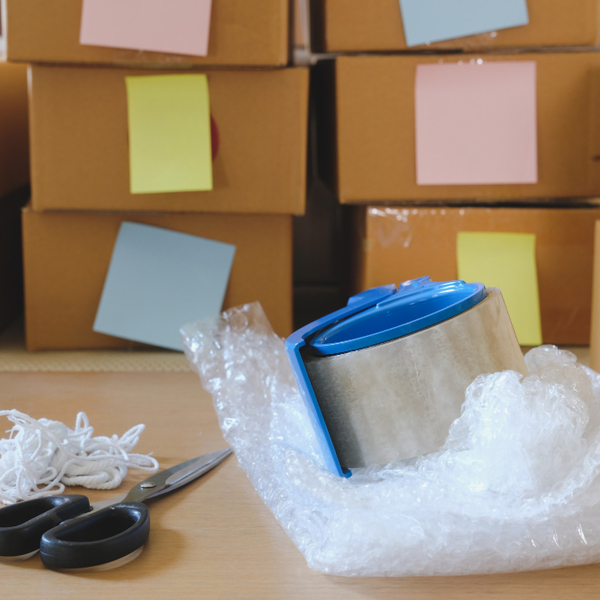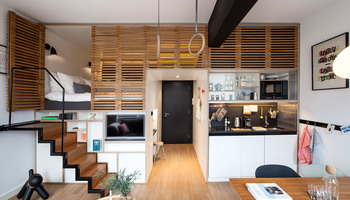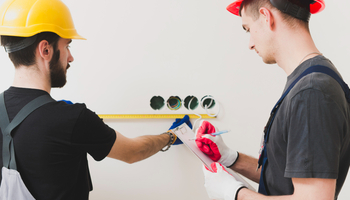The Moving Manual: Your Step-by-Step Guide to a Successful Move

Whether moving across the country or to a neighboring town, relocating can take time and effort. It involves numerous steps and countless decisions, which can sometimes become stressful and overwhelming. However, you can move smoothly and efficiently with proper planning and organization.
This guide will walk you through all you need to do to have a successful move.
Preparing for a Successful Move
Like everything else in life, a successful move requires proper planning. Here are some things to put in place for a smooth moving process.
Creating a Moving Timeline
A solid moving timeline is the bedrock for a successful move. It will serve as your moving guide, helping you keep track of everything that needs to be done.
To start, choose the day to move. Then, work backward, establishing key milestones to complete along the way. Here is an eight weeks timeline you can work with:
- Eight weeks before the move: Start to declutter and sort your belongings.
- Six weeks before the move: Research moving services and choose the best fit.
- Four weeks before the move: Confirm the arrangements with your mover and start packing. Begin with non-essential items.
- Three weeks before the move: Do a change of address. Inform the relevant companies and service providers.
- Two weeks before the move, Arrange to be off work on the moving day if necessary. Ensure your moving date works with everything in your life.
- One week before the move: Pack the essential items and finalize your preparations.
- Three days before the move: Do a last-minute check. Go through your checklist to see if you need to include anything.
- On D-day, Stay close by and supervise the loading and unloading to ensure everything is done satisfactorily.
Tip: Consider moving on a weekday because weekdays are less crowded and cheaper.
Set your Budget
Moving can be expensive, but it’s possible to stay on budget. All you need to do is get creative with budgeting. Consider the following factors when creating a budget:
- Movers or DIY: Decide on how you want to move your stuff. And the good thing is, you have options to choose from. You can hire a man with a van or do it yourself if you have what it takes. If you are hiring movers, do it early. This will give you enough time to get quotes from different movers. You will also have enough time to consider your options and services offered and decide. Waiting till the D-day gets too close may result in not being able to get movers at all, especially if it’s a peak moving season.

- Packing supplies: The boxes, tape, and bubble wrap. Make provisions for all the supplies. To save money, ask family and friends. Check the local stores, too. Sometimes, they have boxes they're happy to give away.
- The distance: If you're moving to a far place, remember to add in gas, hotels (if needed), and any tolls you might have to pay.
- Unexpected Extras: Life is full of surprises. Set a little money aside for any unforeseen circumstances.
Packing Strategies for an Efficient Move
Getting your packing strategies right will go a long way in making your relocation less stressful. Here are some tips you can use:
Pack Room by Room
To have a successful move, you should approach packing strategically. Getting items from different rooms mixed up in the same box is one problem you are likely to face.
To avoid this, create a packing list and pack your items one room at a time. For instance, you can start with bedrooms, move to the kitchen, and then move to the living room.
Besides avoiding mix-ups, packing your items room by room will make packing quicker and easier, as it will allow you to track and locate items during the unpacking phase.
Tip: As you pack, quickly clean off items to avoid carrying excess dirt into your new digs. Cleaning wipes are efficient, or keep a spray bottle and rag handy.
Protect your Fragile Items
Protecting your fragile belongings should be a top priority during moving. Wrap your glassware, mirror, artwork, and other delicate items in a protective material like bubble wrap. And place them in small, compact boxes with adequate cushioning to prevent them from shifting during transport.
Also, label your boxes as “Fragile.” This will alert the movers and help them take extra caution.
Tip: Don't leave empty spaces in the boxes. Fill the gaps with clothing, towels, or packing paper. Movers often will only move boxes that feel tightly packed or balanced. You can hire a complete moving service with packing options for your items' assembly and disassembly services.
Pack your Essentials Box
You should set aside an essential box containing the items you will need immediately upon arrival at your new place. Your essential box should typically include your toiletries, medications, clothing, and important documents. It should be the one you pack last and the first you unpack.

Tip: Don't leave empty spaces in the boxes. Fill the gaps with clothing, towels, or packing paper. Movers often will only move boxes that feel tightly packed or balanced. You can hire a complete moving service with packing options for your items' assembly and disassembly services.
Pack your Essentials Box
You should set aside an essential box containing the items you will need immediately upon arrival at your new place. Your essential box should typically include your toiletries, medications, clothing, and important documents. It should be the one you pack last and the first you unpack
Tape and label your boxes well
Tape everything up and ensure that each box is well secured. And as you pack your boxes, don’t forget to label them. Labeling your boxes will help you unpack efficiently, saving you from the headache of having to look for specific items.
You don’t have a successful move until you quickly unpack your items. So, be generous with labels. Get into the details when labeling—the room name and what’s inside. Using a marker or colored stickers makes it easier to tell which room each item belongs to when unpacking.
Tip: Number each box and keep an inventory list. This will help you keep track of what you packed and easily detect missing items when unpacking.
Final Take
Truthfully, moving can be stressful. But with the right moving guide, you can have a smooth moving experience. Keep a positive attitude, follow the steps in this article, and you will achieve the seamless relocation experience you want.
Popular Articles

How to Find Reliable Packers and Movers in Germany for Internationa...

The Role of 3PL in Ecommerce Inbound Logistics

Best materials for flooring in your home

Top Renovation Tips for Hotels: Why Handyman Services Are Key

What is a Studio Apartment and a 1-room apartment?

DIY vs. Professional Electrical Inspection: What You Need to Know

